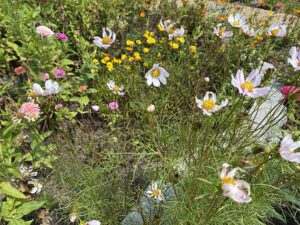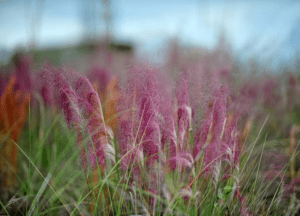The Fascinating Relationship Between Plants and Pollinators
For over 100 million years, plants and pollinators have coevolved, forming a complex and mutually beneficial relationship. Entomophilous flowers, which rely on insects for pollination, have developed remarkable adaptations to attract and guide pollinators such as bees, butterflies, moths, beetles, and even birds. These adaptations not only ensure the survival of flowering plants but also contribute to the biodiversity and stability of ecosystems.
How Flowers Attract Pollinators
Flowers use a variety of sensory signals to draw pollinators in. Scent plays a crucial role, helping insects locate flowers from a distance and guiding them to the nectar and pollen. Many flowers also feature visual cues, such as stripes or color contrasts, that act as roadmaps leading pollinators to their rewards. Bees, for example, are particularly drawn to blue, yellow, and ultraviolet colors, while birds tend to prefer red and orange blooms.
Some flowers take attraction a step further with mimicry. Certain orchids have evolved to resemble female insects, deceiving males into pseudo-copulation, which inadvertently transfers pollen. Others, like snapdragons, have hinged petals that require strength and dexterity to open, ensuring only specific pollinators can access their nectar. The diversity of flower shapes also plays a role in pollination—flat, open flowers like zinnias provide easy access for butterflies, while drooping, bell-shaped blooms offer shelter for feeding bees.
Specialized Pollination Partnerships
Some flowers have developed exclusive relationships with specific pollinators. The yucca plant (Yucca whipplei), for example, depends entirely on the yucca moth (Tegeticula maculata). As the moth gathers pollen, it also lays its eggs within the flower, creating a mutually beneficial relationship—its larvae feed on some of the yucca’s seeds, while the plant ensures successful pollination. Similarly, each fig species has its own specialized fig wasp, demonstrating a tight evolutionary bond that has persisted over time.
Pollinator Preferences at a Glance
Different pollinators have distinct preferences when it comes to flower characteristics:
- Bees – Favor yellow, blue, and purple flowers and are drawn to nectar guides.
- Butterflies – Prefer red, orange, yellow, pink, and blue flowers with flat-topped clusters in sunny spots.
- Moths – Seek out light-colored flowers that bloom at dusk, such as evening primroses.
- Beetles – Are attracted to white or dull-colored, fragrant flowers, like roses and potatoes.
- Flies – Prefer green, white, or cream-colored bowl-shaped flowers. Carrion-eating flies are drawn to maroon or brown flowers with foul odors, such as wild ginger.
- Ants – Though they enjoy nectar and pollen, they are generally poor pollinators, and many flowers have developed sticky hairs to keep them out.
The Importance of Protecting Pollinators
The survival of many plant species depends on their pollinators. As habitat loss, pesticides, and climate change threaten these essential creatures, it’s more important than ever to support pollinator-friendly environments. Planting a diverse selection of flowers, avoiding harmful chemicals, and creating natural habitats can help maintain the delicate balance between plants and their pollinators. After all, the future of our gardens—and ecosystems—relies on keeping these vital relationships intact.
The ultimate fate of many plants may depend on preserving their relationships with pollinators. Ensure that your pollinators don’t practice Social Distancing…
By Summer Sickinger, Hanover Master Gardener
Native Plants to Attract Pollinators
These plants are very adaptable and will help attract pollinators to your landscape. This is just a small sample. Check out our native plant section under Resources to more options.
An asterisk (*) indicates a need for extra water if planted in full sun
Perennials
- Foamflower, heart-leaved or Allegheny (Tiarella cordifolia)* Bloooms early spring
- Goldenrod, wreath (Solidago caesia). Blooms in fall
- Onion, nodding (Allium cernuum) It has a long blooming season (3 to 4 weeks) in mid-summer
- Shooting star (Dodecatheon meadia) Blooms in May-June
- Sneezeweed (Helenium autumnale) Blooms in late summer
- Spiderwort (Tradescantia virginiana)* Blooms from March through August.
- Stonecrop, Allegheny (Hylotelephium telephoides, formerly Sedum telephoides) Blooms August to October
Grasses and Grasslike Plants
- Bluestem, little (Schizachyrium scoparium) Blooms August to February
- Dropseed, prairie (Spoobolus heterolepis) Blooms August to October
- Indian grass (Sorghastrum nutans) Blooms September to February
- Muhly, pink (Muhlenbergia capillaris) Blooms September to November
- Panic grass or switchgrass (Panicum virgatum) Blooms July to February
- Purpletop tridens (Tridens flavus) Blooms August to November

- Sedges (Carex spp.).
- Appalachian sedge (C.nkbe appalachica) Flowers late spring to early summer
- Pennsylvania sedge (C. pensylvanica) Blooms in May
Shrubs
- Bayberry, southern or swamp (Morella caroliniensis, formerly Myrica caroliniensis) Blooms April, May, and June
- Dogwood, gray ((Cornus racemosa) Blooms May or early June
- Inkberry (Ilex glabra) Blooms May to June
- Mountain laurel (Kalmia latifolia) Blooms in May
- Viburnums (Viburnum spp.)
- Mapleleaf viburnum (V. acerifolium) Blooms in June
- Southern arrowwood (V. dentatum) Blooms May, June, July
- Blackhaw viburnum (V. prunifolium) Blooms from April to June




